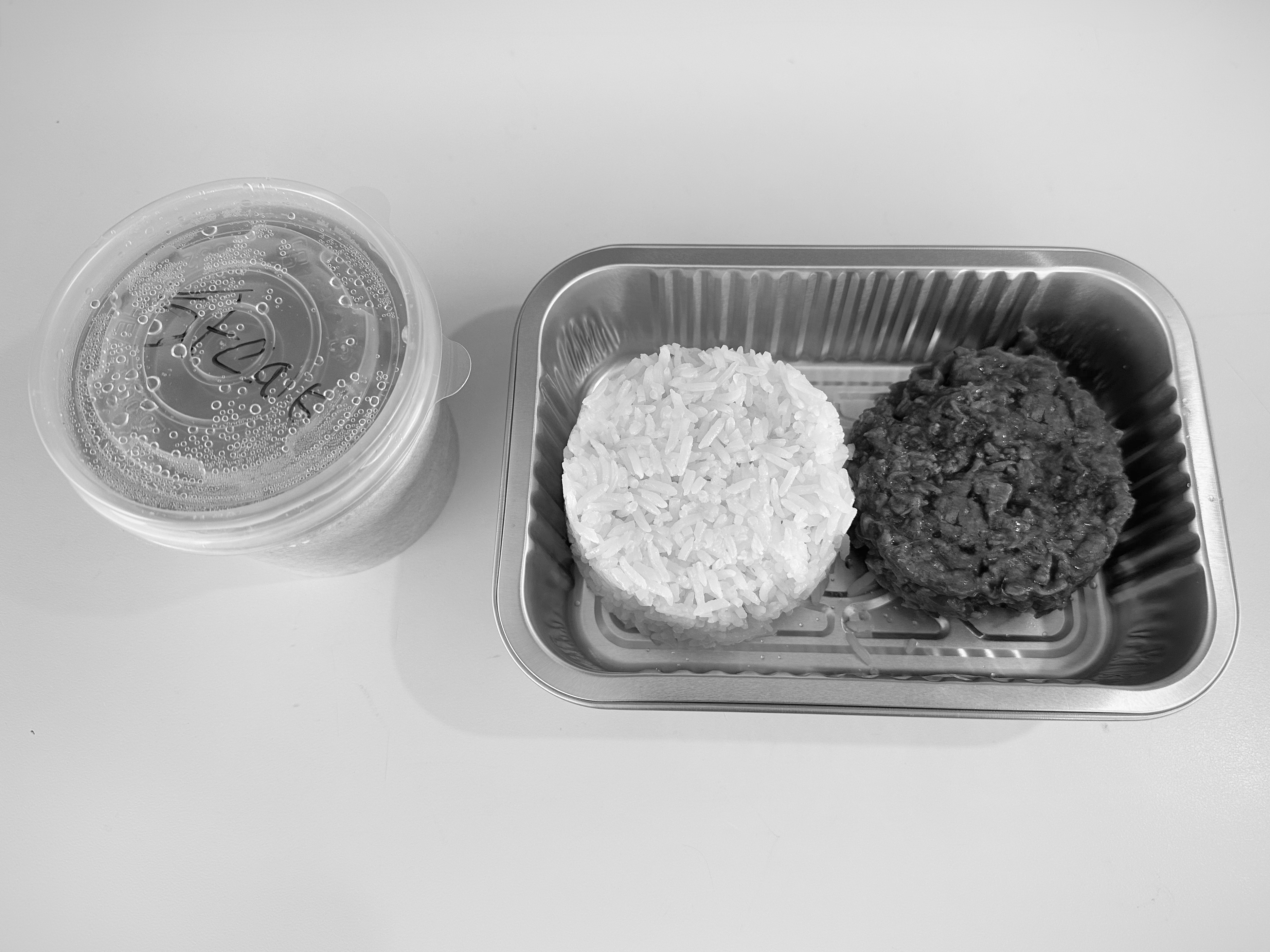
Plane Food Society
Some years ago, I noticed that I'd had improved digestion after an airline flight. I noticed that my digestion remained improved for some days afterwards. It occurred to me that if I was to make airline food, that I would want to using ingredients that aided digestion - not just for the comfort of the passengers, but for the comfort of the other passengers.
The Importance of Malting
I had been curious for years, and I was certain that the airline food companies had a secret, but could find no publicly available information, of course. Chefs don’t advertise their ingredients necessarily, and companies don’t share their trade secrets. Recently I re-researched the topic, and found a podcast with a airline chef that spoke about how she, “makes meals delicious at such high altitude.” She said, in the course of conversation that she, “leaned heavily on koji,” before pausing for an almost imperceptibly brief moment longer than a person normally would pause after such a sentence, indicating extended or focused thought; considering either the language or logic of expanding on the topic, or the consequences of doing so. Then she quickly moved onto the next subject.

This tiny pause, this briefest of silences, in language terms, was the loudest and clearest signal of all.
“WTF is koji,” I thought.
Clearly there is something that this person would rather us not know, or not focus upon, and not necessarily for nefarious reasons. In fact, koji is a very natural, healthy ingredient, and we should all probably eat more of it. It is reasonable that a chef, when speaking about their work, would not want to overemphasize an ingredient, or reveal trade secrets.
.png)
If you are anything like me, you are already looking it up on Google or Wikipedia or ChatGPT. And so should you, because they will go into much more detail than I will, if you're curious.
Or, you already know what it is. It's a fungus, a species of Aspergillus, found in soil, decaying vegetation, and even dust. Some species can be harmful, and others, beneficial.
Mushrooms are a fungus. But a Fungus isn't necessarily a mushroom. Antibiotics are a fungus, and they can save our lives in the case of infection. The fungi are our friends.

Grains are malted and enjoyed by humans across the world. Grains like wheat and rye are malted to make not only beer but malted drink products like Horlicks in the UK, malted milkshakes in the US, and Milo, a popular (and incredibly delicious) chocolate milk beverage popular in Asia and Australia.
Nobody I ask seems to know what malt is. I asked myself the same question about Marmite, and moments after asking myself the question, the answer seemed obvious. My thought process was this: as delicious as it is, to me, it definitely seems like it's whatever is left at the bottom of the barrel of.. something.. beer! I figured, it's yeast extract so it must be what's left at the bottom of the barrel once the beer has been made. After all, it's made in the same city, Burton-on-Trent, in Staffordshire, in the UK.
Turns out I was right about that one. But malt wasn't as obvious. I needed to look that one up. There is a connection here too, as yeast is another example of a useful fungus that facilitates a reaction in the food and drinks we be like to eat and drink.

Ants do this too. There are apparently over 200 species of ant that cultivate fungi, in the same way, for the same purpose. Whereas baking a loaf of bread is currently out of reach for them, they are proficient farmers. They harvest leaves which they themselves cannot digest directly, and they grow fungus on them which breaks down the indigestible cellulose into more digestible sugars. That's why we do it too. Some queen ants hold a portion of ‘starter-culture’ of fungus in her mouth to start new fields of fungus to farm, in new nests. According to some sources, some ants also eat the fungus directly.

Malting is a controlled process, to ensure that just the right kind of fungus grows on the grain. There are many fungi, some essential, some very much not. When malting wheat or rye, the natural traces of fungi are cultivated, and when malting rice, a starter of koji - a specific species of Aspergillus - Aspergillus oryzae, is added to begin fermentation. Like the beer process, koji is used in sake production. First the Aspergillus fungus breaks down the indigestible rice starches turning them to simple sugars, then yeast is used to turn those sugars into alcohol. Brewing sake is a two added-fungus process. Beer requires malting which cultivates existing fungus, before adding yeast which is a fungus, and wine has simple sugars, so it simply requires the one fungus, yeast, to turn into alcohol.

Fungus it's not to be mixed up with bacteria. Like all life on earth, they use DNA to reproduce. Bacteria are tiny, and fungi can be tiny, but also big like mushrooms. If you Google the difference between the two, you may find there is not an easy and satisfying explanation that clearly explains the differences, which are minor compared to the similarities. Bacteria reproduce, asexually, and fungi, reproduce asexually, and also sexually. Both fungi and bacteria absorb nutrients by secreting enzymes, as do we. Bacteria don’t have a ‘true’ nucleus, and fungi have organelles - these are not spectacular differences.
According to experts in such things, only 1.5% to 7% of our total DNA, is uniquely human. We share 30-50% of our DNA with fungi, and we share a common ancestors - which is a lot to take on, for those of us that had only recently come to terms with having been a monkey, and before that, having been a fish.
70-90% of our cell count is still, either bacteria or fungi. We are less than a third, ‘human cells.’ They are living in and on your body, and if they weren’t, you wouldn’t be here. It’s how you digest food; bacteria, ‘prepare it’ for you before you can absorb its nutrients. They protect you from infection; your friendly bacteria fight against the bad ones. Viruses too. Trillions of them inside of us; some of them doing mighty battle on your behalf, some of them, just kicking it. Viruses aren’t too different either; they are simpler, and require hosts in order to reproduce.

Clearly, all digestion, and seemingly all biological processes, involve bacteria, and fungus. In fact, like ants, humans pre-digest food outside the body using bacteria and fungus. Malting is an extension of this, and every culture in the world does it. They use it to make beer, and sake, milk beverages, candy. At least some or all of these things are delicious to most people we intuitively know they are beneficial to us. We have evolved a sense of smell and taste that gives us feedback indicating its benefits.
My tastebuds go nuts for Horlicks, Milo, or any malted milk beverage; it’s not subtle. I recently found out that my mother also liked to eat the dry Horlicks powder as a child - not the sort of thing one admits freely, which is why it took so long to discover.

If you’re anything like me, you already started looking for koji or Aspergillus on Amazon. Koji is a product that is readily available, and it is used to marinate ie. predigest meat to make it more delicious. It is also available for those that wish to make their own sake, I’m sure. For scientific reasons I will say that so far I have been using a product called Fodzyme which I’ve been getting on Amazon. There may be better, but I haven’t tried alternatives yet. There is a product that has been on the market for many years called, Beano, which also has Aspergillus as its main active ingredient, for the same purpose.
I make no recommendations. Do your own research; I’m not a doctor, and take no responsibility whatsoever for anyone’s decisions but my own. This is my story, along with some verifiable facts, which you should confirm - don’t take anybody’s word for anything. It is your choice if you let my story inform yours. Everybody is different, and no solution fixes everything.
iPhone photography and essay
- MST